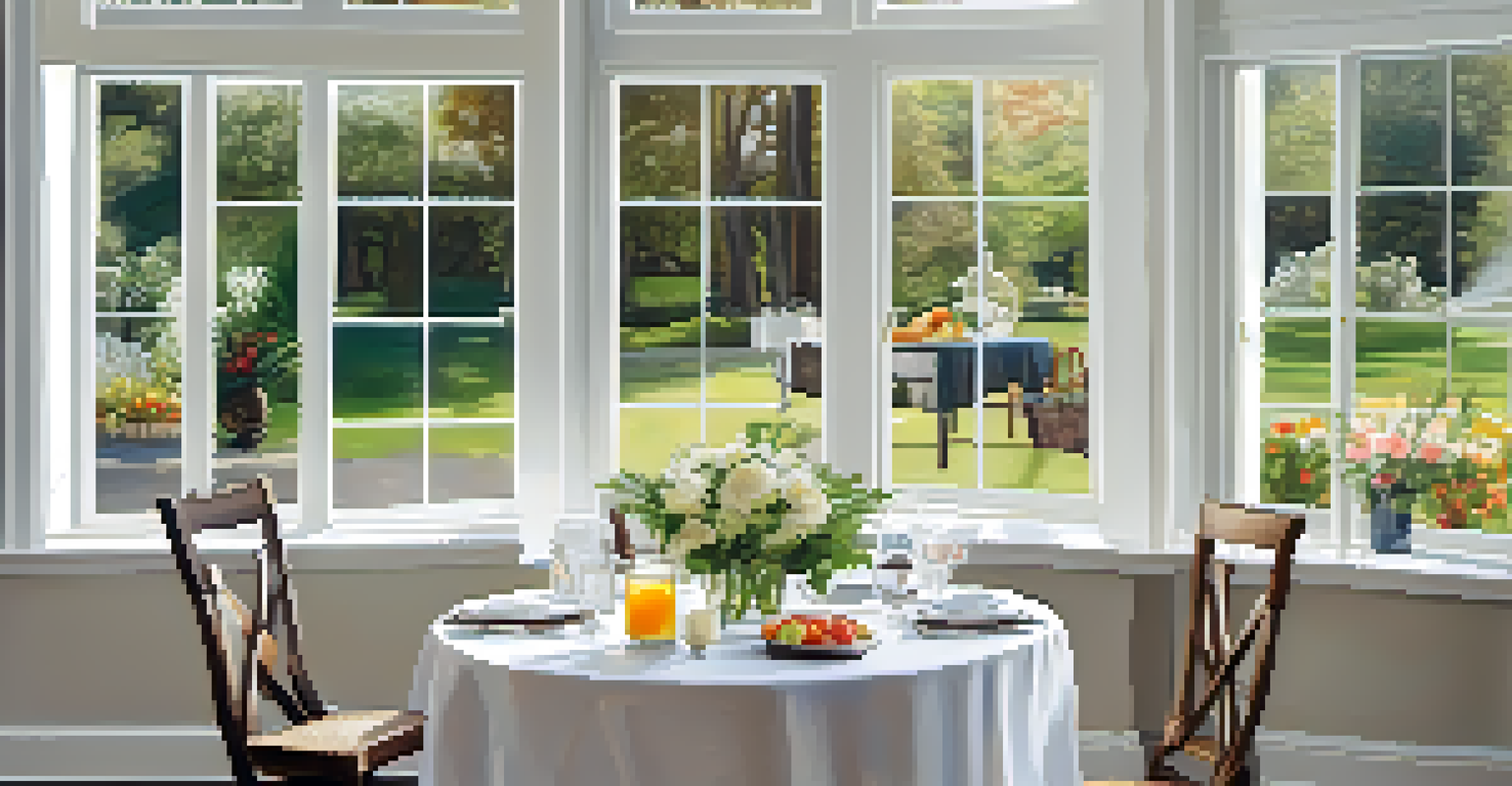Preparing a Compelling Open House Brochure for Visitors

Understanding the Purpose of Your Open House Brochure
An open house brochure serves as a vital tool for showcasing your property. It provides potential buyers with essential information and first impressions that can influence their decisions. When done right, it can ignite interest and prompt visitors to ask more questions.
Marketing is no longer about the stuff you make, but about the stories you tell.
Think of the brochure as your property's storybook. It not only highlights the features but also paints a picture of what living in that home could be like. By presenting a narrative, you can help visitors envision themselves in the space.
Ultimately, the goal is to create a connection between the property and the visitor. A well-crafted brochure can make that connection tangible, guiding them toward a more in-depth conversation and, hopefully, a sale.
Choosing the Right Design and Layout for Impact
The design and layout of your brochure play a crucial role in capturing attention. A clean, organized layout allows readers to easily navigate through the information. Prioritize readability by using clear fonts and a logical flow of sections.

Consider using high-quality images that showcase the property's best features. Visuals not only break up the text but also draw the reader in, making them more likely to remember the home. Think of this as creating a visual journey through the property.
Brochures Tell Your Property's Story
An open house brochure functions as a narrative that showcases your property, helping potential buyers envision their lives in the space.
Don't forget to incorporate your brand elements, such as logos and color schemes, to maintain consistency. This not only reinforces your identity but also enhances professionalism, making your brochure stand out among others.
Crafting Engaging Copy That Captivates Readers
The words you choose are just as important as the design. Use engaging and descriptive language that evokes emotion and paints a clear picture of the home. Words should invite readers to imagine their lives in the space.
A picture is worth a thousand words.
Instead of simply listing features, try framing them in a way that highlights benefits. For example, instead of saying 'three bedrooms,' you might say, 'three cozy bedrooms perfect for family gatherings and restful nights.'
Remember to keep the tone conversational and approachable. Writing in a friendly voice can make the brochure feel more personal, which is essential in building rapport with potential buyers.
Highlighting Key Features and Unique Selling Points
Every property has unique features that set it apart from others. Make sure to highlight these selling points prominently in your brochure. This could be anything from a newly renovated kitchen to a stunning backyard oasis.
Use bullet points or icons to make these features easily digestible. This allows readers to quickly scan the brochure and absorb the information without feeling overwhelmed. Think of it as creating a cheat sheet for potential buyers.
Design Matters for First Impressions
A clean, organized layout with high-quality images captures attention and enhances the professionalism of your brochure.
Additionally, consider including testimonials or quotes from previous owners or neighbors. This adds a layer of trust and can be very persuasive, helping to reinforce the home's appeal.
Including Practical Information for Potential Buyers
While the brochure is a marketing tool, it also serves a practical purpose. Include essential information such as the property's square footage, number of bedrooms and bathrooms, and the asking price. This helps buyers assess whether the home fits their needs.
Additionally, consider providing information about the neighborhood, such as nearby schools, parks, or shopping areas. This context can be a deciding factor for many families looking to move into a new community.
Don't forget to include your contact information and next steps for interested buyers. Whether it's scheduling a private showing or attending an open house, make it easy for them to take the next step.
Utilizing High-Quality Images to Showcase Your Property
Images are often the first thing potential buyers notice in a brochure. Invest in high-quality photography that captures the property in its best light. Natural lighting and well-composed shots can make a significant difference in how the home is perceived.
Consider including a mix of wide-angle shots that show entire rooms, along with close-ups of unique details. This combination helps create a comprehensive view of the property, allowing visitors to appreciate both the overall layout and finer touches.
Highlight Key Features Clearly
Emphasizing unique selling points and practical information in an easily digestible format can significantly influence buyer interest.
If possible, include images that showcase the home during different seasons or times of day. This can help buyers visualize how the space feels throughout the year, adding another layer of appeal.
Reviewing and Polishing Your Brochure Before Printing
Before you hit print, it's crucial to review your brochure carefully. Look for any grammatical errors or typos that could detract from your professionalism. Even small mistakes can leave a lasting negative impression on potential buyers.
Consider getting a second opinion from a colleague or friend who can provide constructive feedback. They might catch details you've overlooked or suggest improvements that enhance the overall quality.

Finally, ensure that your brochure is printed on high-quality paper and in vibrant colors. This not only elevates the look but also makes it more durable, ensuring that it stays in good condition as it travels from hand to hand.